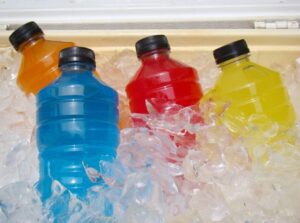Scheduling USDA audits GAP, Harmonized or Harmonized Plus
Anyone who has not scheduled their audit needs to be aware of the documentation needed to be sent to the New Jersey Department of Agriculture prior to the audit. They will want to see a copy of your food safety plan, proof of your food safety training, any current water tests, training records of all personnel, ten days of supporting records (for example – cleaning and sanitizing equipment, monitoring for wildlife, approved supplier list, etc.), mock recall and a self-audit. Why do they want the records prior to the audit? It saves time on their end plus it will save the grower money by them spending less time on the farm.
The audits can be scheduled in two ways either call the NJDA office at 856-839-3388 or go to fvinspection@ag.nj.gov . There is a new request form so if you have an old form contact them for the new one. The request should be at least two weeks prior to the audit.
Need for multiple audits.
Crops may be grouped together on the initial request to be included in the audit. The audit needs to be scheduled so the auditor can see the distinct types of harvest activities. For an asparagus and tomatoes example, if the asparagus is being harvested during the initial audit while the tomatoes are growing but won’t be ready for harvest until a later date, the initial audit can cover both commodities but an unannounced audit would be used by the auditor to observe the harvest of the tomatoes. Also, the auditor will want to see all crops listed on the audit request form.
It is an option for the auditee to ask for commodities to be split on different audits. To certify two audits that occur at separate times for different commodities the auditee would need to let the auditor know the intention for two audits in the season. There would be a separate audit done, a certificate for each audit and a website posting for each audit. The certification dates would be separate for each audit done.
USDA Audit Rates Increasing October 1, 2024
Anyone who is getting a GAP, Harmonized or Harmonized Plus Audit through the New Jersey Department of Agriculture will see the rates increase in October. The basic hourly rate will increase from $155.00 to $163.00. Those that are getting a Global Food Safety Initiative (GFSI) certification will have an additional $250.00 for each audit.
 Article By: The Rutgers Farm Health and Safety Working Group: Kate Brown, Michelle Infante-Casella, Stephen Komar and William Bamka
Article By: The Rutgers Farm Health and Safety Working Group: Kate Brown, Michelle Infante-Casella, Stephen Komar and William Bamka